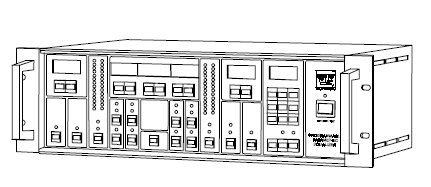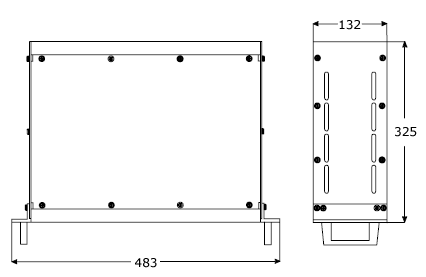| |
| |
 |
 |
 HOME
HOME 음향장비 음향장비 PPE
2410 PPE
2410 |
 |

The PPE 2410 is a sophisticated, programmable, twochannel
four-band parametric equaliser with total control of
all variable settings. The memory offers storage, recall
and comparison of up to 64 different settings.
Center frequencies are visible on a highly accurate
five-digit display. |
|
|
By
"sweeping" a narrow boosted peak you can easily detect
resonances and identify the frequencies at which they occur. Three-digit
displays are provided for input level, cut/ boost level, frequency,
Q factor, output level and for preset bank and registers. Input
and output signal levels are displayed on LED bars with peak hold.
Extensive features
The input gain of the PPE 2410 can be increased to +10 or + 20 dB
to achieve an optimal signal to noise ratio.
For comparison of original and processed signal, two EQ in/ out
switches are provided, one for each channel. Bypass switches per
channel allow for quick determination of the effect of the band.
The PPE 2410's ARMOR? chassis is built to withstand heavy "on-the-road"
environments.
Microprocessor
control
As a result of the digital control, the analog signal path is of
minimal length which results in a significant quality
improvement. Another advantage is that the accuracy of the equaliser
settings is better than that of comparable analog controlled equalisers.
To avoid operation by unauthorised staff, the operation of the total
equaliser can be locked by a standard lock function. Related to
the lock function is the "presets only" function with
which only presets can be recalled without the possibillity of changing
them.
Standard leveller function
The leveller function is very useful in situations where the average
sound pressure level of a system must be limited to a certain value.
The PPE 2410 leveller works very smoothly, which results in a undistorted
and virtually inaudible signal attenuation whenever the average
output level exceeds an (adjustable-) maximum level.
Custom
network communication
Data communication between a PC and the PPE 2410 is realised through
SAnet. This multipoint network uses serial data transmission at
distances of up to 500 metres. |
| |
 |
 |
| |
 |
| Max
input level |
+ 20 dBu (7.75 V) |
|
|
| Max output level |
+ 20 dBu/600 Ohms |
|
|
| Extra input amplification |
0 dB, + 10 dB, + 20 dB |
|
|
| Input impedance |
24 kOhms each leg, (30 kW unbalanced) |
|
|
| Output impedance |
25 kOhms each leg, (50 W unbalanced) |
|
|
| Frequency range |
20 Hz - 20 kHz, -0,25 dB; 10 Hz - 200 kHz, -2 dB |
|
|
| Signal/noise
ratio |
> 90 dB, 10 Hz - 100 kHz, typ. 100 dB at 1 kHz |
|
|
| Common mode rejection
ratio |
> 80 dB, 10 Hz - 100 kHz, typ. 90 dB at 1 kHz |
|
|
| Channel separation |
> 80 dB, 10 Hz - 100 kHz, typ. 90 dB at 1 kHz |
|
|
| THD (+ 10 dBm) |
< 0.005%, 10 Hz - 100 kHz,typ. 0,003% at 1 kHz |
|
|
| IMD (+ 10 dBm) |
< 0,01%, 2 kHz - 20 kHz |
|
|
| TIM (+ 10 dBm) |
< 0,005%, at 15 kHz |
|
|
| Slew rate |
7 V/µs |
|
|
| Max. Boost/cut
level |
+/- 19.5 dB (per band) |
|
|
| Q factor |
Minimum 0,3, Maximum, 15.0 |
|
|
| Central frequency
range |
Band 1: 20 Hz - 600 Hz; band 2: 60 Hz - 2 kHz
band 3: 200 Hz - 8 Hz; band 4: 600 Hz - 20 kHz |
|
|
| Remote control |
SAnet (SA network) and MIDI |
|
|
| Mains supply |
110 V/220 V/240 V AC - 50 Hz /60 Hz, selectable at the rear |
|
|
| Power consumption |
50 VA |
|
|
| Housing |
19 inch rack mount, 3 HU high, 325 mm (12,8 in.) deep |
|
|
| Physical dimensions
(h x w x d) |
132 x 483 x 325 mm (5.2 x 19 x 12.8 in.) |
|
|
| Weight |
8.6 kg (19 lb) |
|
|
|
| |
| |
|
|
|
